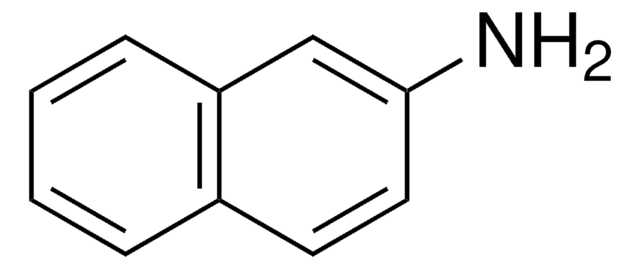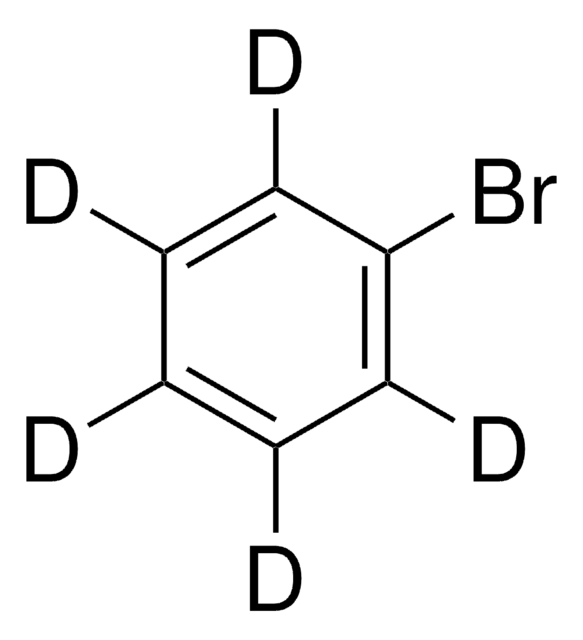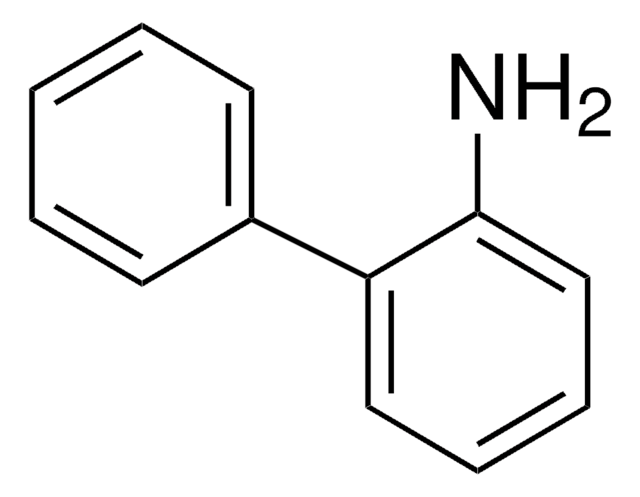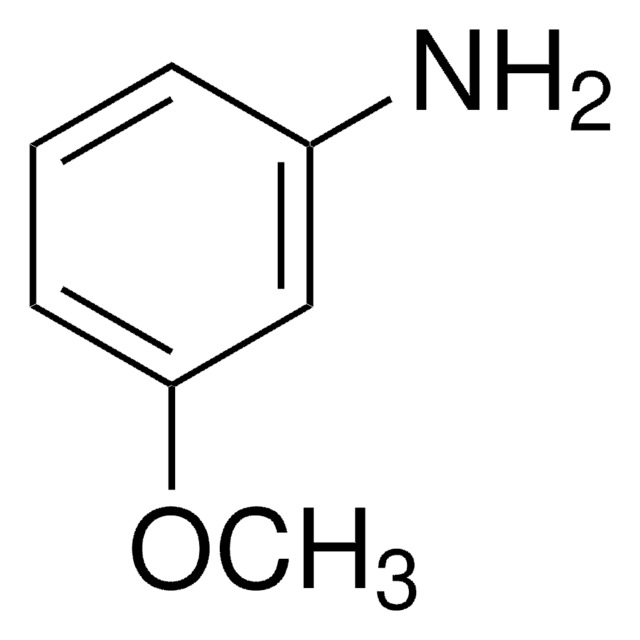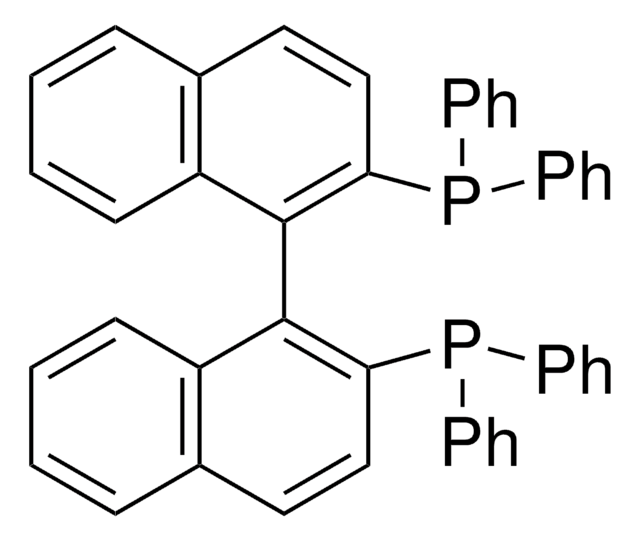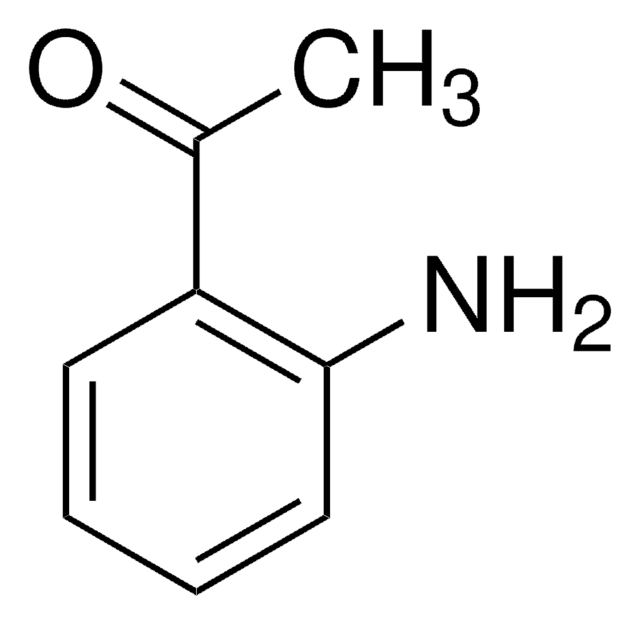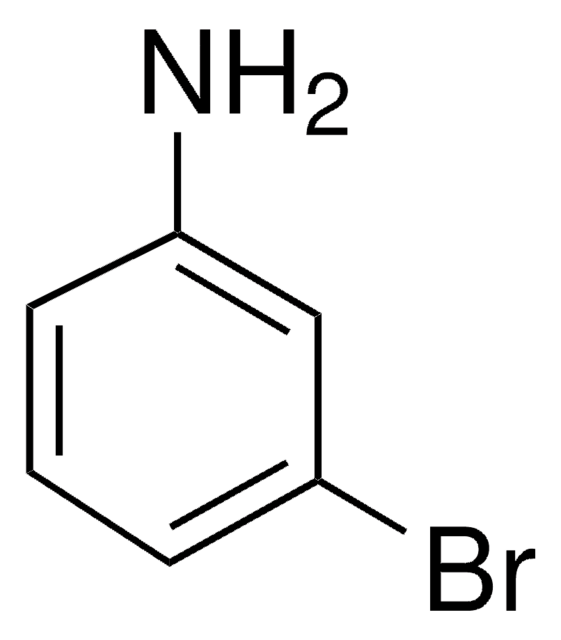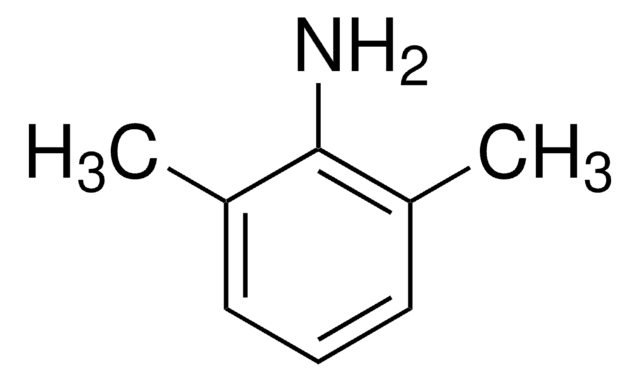716448
3-Aminobiphenyl
97%
Autenticatiper visualizzare i prezzi riservati alla tua organizzazione & contrattuali
About This Item
Formula empirica (notazione di Hill):
C12H11N
Numero CAS:
Peso molecolare:
169.22
Numero MDL:
Codice UNSPSC:
12352100
ID PubChem:
NACRES:
NA.22
Prodotti consigliati
Saggio
97%
Stato
solid
Punto di fusione
28-33 °C
Gruppo funzionale
phenyl
Stringa SMILE
Nc1cccc(c1)-c2ccccc2
InChI
1S/C12H11N/c13-12-8-4-7-11(9-12)10-5-2-1-3-6-10/h1-9H,13H2
MUNOBADFTHUUFG-UHFFFAOYSA-N
Avvertenze
Warning
Indicazioni di pericolo
Consigli di prudenza
Classi di pericolo
Acute Tox. 4 Oral - Eye Irrit. 2 - Skin Irrit. 2 - STOT SE 3
Organi bersaglio
Respiratory system
Codice della classe di stoccaggio
11 - Combustible Solids
Classe di pericolosità dell'acqua (WGK)
WGK 3
Punto d’infiammabilità (°F)
>230.0 °F - closed cup
Punto d’infiammabilità (°C)
> 110 °C - closed cup
Scegli una delle versioni più recenti:
Possiedi già questo prodotto?
I documenti relativi ai prodotti acquistati recentemente sono disponibili nell’Archivio dei documenti.
I clienti hanno visto anche
M Maclure et al.
American journal of public health, 79(10), 1381-1384 (1989-10-01)
The hypothesis that involuntary exposure to tobacco smoke--passive smoking--results in greater risk of cancer was assessed by measuring the levels of two known carcinogens in the blood of 57 nonsmokers with varying degrees of involuntary exposure, including six heavily exposed
M S Bryant et al.
IARC scientific publications, (89)(89), 133-136 (1988-01-01)
In a population-based study in Turin, Italy, smokers of blond tobacco showed 4-aminobiphenyl (4-ABP) adduct levels some three times higher than nonsmoking subjects, and smokers of black tobacco showed levels about five times greater than nonsmokers. A dose-response relationship between
Paul L Skipper et al.
Cancer epidemiology, biomarkers & prevention : a publication of the American Association for Cancer Research, cosponsored by the American Society of Preventive Oncology, 12(6), 503-507 (2003-06-20)
Roughly one-half of bladder cancer incidence in the United States can be attributed to known causes, mainly cigarette smoking, and it has been hypothesized that the aromatic amines in tobacco smoke are important etiological agents. Nonsmokers are also exposed, through
J W Gorrod et al.
Anticancer research, 6(4), 729-731 (1986-07-01)
The metabolism of 3-aminobiphenyl (3-ABP) and 3-acetamidobiphenyl (3-AABP) has been studied using fortified rat liver microsomal preparations. Metabolites in concentrates of ether extracts from hepatic microsomal preparations were analysed by TLC and GLC. The metabolites were characterised by a comparison
G Ronco et al.
British journal of cancer, 61(4), 534-537 (1990-04-01)
In a previous study we found that aromatic amines, particularly 4-aminobiphenyl, formed haemoglobin adducts at higher concentrations in the blood of smokers compared to non-smokers. We re-analyse here data on haemoglobin adducts of 14 aromatic amines in order to ascertain
Il team dei nostri ricercatori vanta grande esperienza in tutte le aree della ricerca quali Life Science, scienza dei materiali, sintesi chimica, cromatografia, discipline analitiche, ecc..
Contatta l'Assistenza Tecnica.![[Pd(OAc)2]3 reagent grade, 98%](/deepweb/assets/sigmaaldrich/product/structures/508/249/99a0ef2c-b77c-4d73-8ed9-0cca05b6b41f/640/99a0ef2c-b77c-4d73-8ed9-0cca05b6b41f.png)

